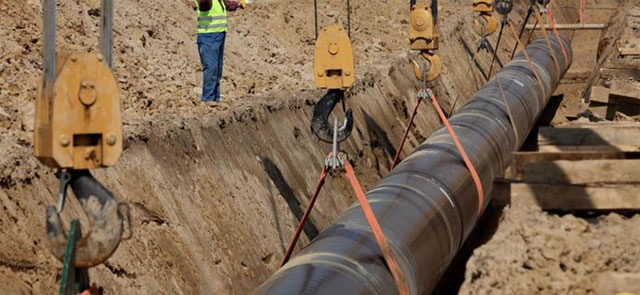
Kampala, Uganda | THE INDEPENDENT | The partners in the oil and gas industry in Uganda intend to supply solar energy to power the East African Crude Oil Pipeline in transporting crude from Hoima in western Uganda to Tanzania’s Tanga Port.
The energy will be used at the six pump stations along the pipeline, two of them located at Kabaale industrial park in Hoima and in Sembabule in Uganda. Pump stations are large industrial facilities that maintain the flow and pressure of oil by receiving oil from the pipeline, re-pressurizing it, and sending it back into the pipeline system.
An equivalent facility in a natural gas pipeline is called a Compressor station. The pump stations are spaced between 40 and 100 miles, depending on the terrain of the route of the pipeline, the capacity of both the pipeline and the station, and the type of product moving through.
Uganda’s crude is heavy and thick (highly viscous), and despite the pipeline being heated, will require pump stations to boost its movement to the port. The EACOP project consists of the construction of a buried 1,443 km oil pipeline, a storage terminal and a loading jetty in Tanga.
“The oil pipeline includes six pumping stations, powered by solar plants in Tanzania, and a heat tracing system. The physical characteristics of the oil from Tilenga mean that it needs to be kept at a temperature of 50°C for transportation,” says a statement by Total, the lead investor in the pipeline.
The solar plants to be part of the project financing decisions is also aimed at reducing the cost on the environment, which would have been higher when using petroleum oil. The pump stations along the pipeline are also considered one of the riskiest stages along the pipeline due to the emission caused by both the product and the kind of energy used.
Different kinds of pumps run on diesel, natural gas, or electricity, depending on the type of product, availability of the type of energy and the financial and environmental costs. Uganda’s pipeline project has been criticized by various organisations in Africa and Europe, for its potential cost to the ecosystem and the environment generally.
While some NGOs have called on the leaders of Uganda and Tanzania to stop the development of the project, others have convinced international banks not to finance the project.
Total and the government of Uganda have persistently allayed the fears of environmental effects, saying that strict measures have been put in place following international guidelines and standards. Pump stations release pollutants that are harmful to health and climate, including Volatile organic compounds (VOCs).
“These are emitted as gases from certain solids or liquids and they include various chemicals, some of which may have short- and long-term adverse health effects”, according to Earthworks, a US-based environmental protection NGO.
Other common gases are nitrogen oxide, carbon monoxide and carbon dioxide. Installation of the solar energy stations and connection to the pipeline is expected to cost 380 billion Shillings. The use of solar may help ease the pressure on the project as solar is considered one of the cleanest sources of energy.
Other concerns raised by the environmentalists concern the fate of the plants and animals in the protected wildlife areas, as most of the oil and gas activities are located in the national parks like Murchison Falls and Queen Elizabeth national parks.
Total is due to relinquish to the government most of the land it had occupied for its exploration activities, and in all, less than 1 per cent of the protected area will be retained for the rest of the activities.
The heated pipeline is planned to run under the ground and will be insulated to avoid emitting heat into the soil and the environment. “The pipeline is a 1,443km crude oil export infrastructure that comprises a 24inch insulated, buried pipeline, 6 Pumping stations (2 in Uganda and 4 in Tanzania),” says Stella Amony, Communications Officer at Total E&P Uganda.
*******
URN
 The Independent Uganda: You get the Truth we Pay the Price
The Independent Uganda: You get the Truth we Pay the Price


